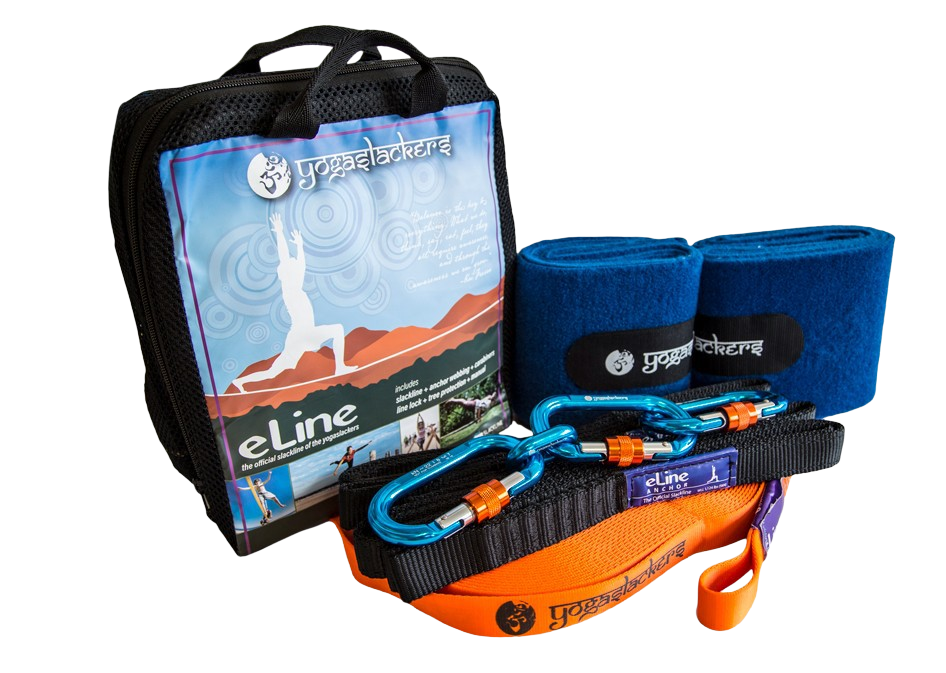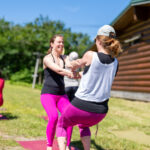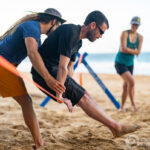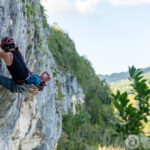Handstands
In this page you will find a growing list of handstand training drills for all levels.
If you would like to receive our monthly training program, join our newsletter and select 12 Days of Handstands. A community funded online training program. Check this month’s training program.
Warm up Videos
Pre-Handstand Warm Up | Practice Before Wall Series
This video will guide you through a short yoga-inspired warm up series.
Practice this warm up series before any handstand wall series. It focuses on preparing the wrist and shoulders to carry the weight of handstands. While also activating the muscles and body movements to find a straight handstand line.
Full Warm Up Series
Warm ups are very personal. What your body needs to warm up, is probably really different than what is needed by someone else. If you are tight your warm up should focus on opening up your muscles and releasing tension. If you are very flexible, your warm-up may required more strengthening moves. If something hurts, then we need to release and prepare the muscles that support the aching joint.
There are so many variables. With that in mind, try this warm up series. It works for me and several of my students. I am looking forward to hear how it worked for you.
Follow Along Videos
Full Belly to the Wall Practice with Stretching
A timed sequence for you to follow along. It features a 1 minute countdown timer. If you are holding your handstands for less than a minute – use the timer to know when is time to come up. You can even substitute some Belly to the Wall for Belly to the Ground.
It includes some stretching exercises between the Belly to the Wall Holds.
Wall Series: Tightness Drill & Belly to the Wall
Incorporates 6 rounds of:
– 20 sec Wall Tightness Drill
– 40 seconds of Belly to the Wall
with additional stretching exercises in between repetitions.
Wall Series: Belly to the ground + Tightness Drill + Belly to the Wall
Incorporates 6 rounds of:
– 15 sec Belly to the Ground
– 20 sec Wall Tightness Drill
– 20 sec Belly to the Wall
with additional stretching exercises in between repetitions.
Preparatory Drills
Plank and Forearm Plank with Blocks
Learn to maintain the Belly to the Ground alignment, while working on the correct hand and forearm placement required for handstands and other arm balances.
CROW
Learn to balance on your hands while maintaining proper forearm placement.
Belly to the Ground
This drill will help us find our handstand line in a position that is not weight bearing. Do not get confused… this is NOT a resting pose.
Plank to Pike Jumps with Blocks
Work on building as much compression as possible in your body by continuously trying to get your feet closer to your hands, while at the same time keeping the arms straight and constantly pushing into the ground to lift yourself up!
Downward Dog to Turbo Dog
Practice scapular elevation and the external rotation of the upper arm.
Dolphin
Practice scapular elevation, external rotation of the upper arm while learning proper shoulder alignment.
Supine Tuck Ups with Wall
This drill will help us understand the pathway we want to follow while entering a handstand through a Tuck Up.
Supine Straddle Ups
This drill will help us understand the pathway we want to follow while entering a handstand through a Straddle Up.
Supine Pike Ups
This drill is a good way to work on our body mechanics while waking up the hamstrings and core. Throughout the entire movement focus on keeping a hollow body position. Ribs in and lower back flush on the ground.
Plank to Pike Press
The easiest press we know. It only requires some slippery floors, socks, a slider or something to help you slide away as you gain strength and flexibility.
Mirror Check
Preparatory Inversions
Practicing freestanding Headstands is a great way to build your balance. This drill will help you learn to balance using your core, to keep your line and to feel where you are in space.
Forearm Balance is a great tool to learn to balance a handstand. In a sense your forearm will act as a giant hand. The balance will come from there, and with time you will learn to dial in the balance and need less space to balance… aka, move towards balancing with your hands.
Wall Drills
Forearm Balance on the Wall
a.k.a Dolphin on the Wall. In this drill we continue working with the external rotation of the upper arm and the scapular elevation. Now with most of your weight.
This pose can be particularly challenging if your shoulders are tight. Check an additional video explaining this drill and the use of a spotter in our IG account.
L-Handstand on the Wall
The goal of this pose is to work on the strength and flexibility required to hold a handstands. We want to focus on making a straight line from your arms all the way to your hips.
Falling Drills
Learning how to fall safely from a handstands is the key to feel comfortable while handstanding. Practice these two falling methods before attempting any belly to wall or freestanding handstand drills.
Wall Tightness Drill
This is a short and effective drill to help us engage our core while being upside down. Practice this drill after a few rounds of belly to the ground and before practicing belly to the wall.
Shoulder Push / Extension
In order to protect the health of our shoulder joints and achieve a more stable handstands, we want to maintain the shoulder push – often referred as extending through the shoulders. This video explains the concept. While at the beginning it may seem that we are doing a different drill, eventually we will gain the ability to maintain the push on all handstands, and this drill will become obsolete. Or so we hope!
This video addresses the shoulder push action on a Downward Dog, during Belly to the Wall and in a Freestanding Handstand.
Belly to the Wall
Belly to the wall is an amazing drill. It may take you some time to make friends with it, but once you do, it will be your handstand’s best friend forever.
Check another video explaining this drill and the use of a spotter in our IG account.
Wall Scissor or Alternating Legs
Let’s find our core while learning to carry our handstands on our hands. You will need a pair of yoga blocks for this drill. They will help you maintain your forearm alignment. Do this drill after a few rounds on the Wall Tightness Drill.
Wall Slide Away
Inspired by Coach Bachmann from cirqueLIFE, this technique focuses on utilizing the strenght from ‘Wall Tightness Drill’ to get off the wall. Learn how to align your body, move your shoulders, and use your hips and ribs effectively to master handstands.
New Belly To the Wall & Wall Scissors
Entrances
Headstand Presses: Tuck, Straddle & Pike
Practice your handstand entrances on Supported or Tripod Headstand.
Tuck Ups
Tuck ups are our favorite drill ever. Not really. They are the bitter medicine that one needs to take to daily.
Check another video explaining this drill in our IG account.
Kneeling Pike with Blocks
Mastering the four variations of this drill will help you master all other handstand entrances.
Straddle Up
Straddling up to a handstand can be a beautiful and efficient way to become inverted. We recommend reviewing the Supine Straddle Up Drill if you struggle with finding your way up.
Pike Ups with Blocks
Piking up can be a challenging drill. To make this drill a little easier, let’s use a spotter and blocks. The spotter is there to help us enter our handstand in one fluid motion. While the blocks are there to remind us to roll into the position instead of moving the shoulders too far over hands.
Kick Switches
A fun way to enter a handstand where we can practice spinal articulation, and core activation.
This drill will help us keep our shoulders aligned while increasing compression of our legs to torso while learning to stack our forearms over our hands.
Compression Drills
Cartwheel to Tuck Hold on Wall
Entering and exiting your handstand through a cartwheel helps to train your sideways stability and can help you feel more comfortable to bail out of handstands. Keep straight arms and use the power of the legs to drive yourself up into the handstand.
This drill will help us find the compression and back roll required to jump, press and hold certain handstand shapes. The focus of this drill is strengthening our back muscles and increasing our shoulder and upper back mobility. Yes, you will feel it on your hamstrings too, but that’s a secondary benefit! Use blocks next to your forearms to make sure that as the leg reaches the ground the shoulders stay on top of the hands. Avoid bypassing the shoulder strength by moving the ribs close to the wall. Attempt to keep the hips over the shoulders for as long as possible. This will be limited by your hamstring flexibility.
Tuck on Pillar with Single Leg Extension
This drill will help us find the compression required to jump, press and hold certain handstand shapes. The focus of this drill is strengthening our back muscles and increasing our shoulder and upper back mobility.
1st Position Hold on Wall
This drill is a tough and effective one. Useful for those that want to learn how to press a handstand, open shoulders, gain endurance and have some awesome fun with a wall.
Freestanding Tuck Hold
The goal of this drill is to go from a straight freestanding handstand to a tuck position, then return to a straight handstand.
The lower your bring the knees to your chest *while maintaining open shoulders* the better.
Slow Straddle Press Down
Pressing up into a handstand requires strength, flexibility and perseverance. Pressing down, requires all of that but in smaller quantities. Use this drill to learn the path to pressing up with ease.
Wall Straddle Pres Down
This drill helps us find compression while also teaching us to maintain the forearms over our hands. The goals are: forearms over hands, arms straight, shoulders externally rotated, maintain the shoulder push, ribs in. Then bring the legs as close to your body as possible, while maintaining those actions.
You can practice this drill as a slow press down. Or you can hover your feet on the wall in the lowest position you can hold. To do this, play around to find the perfect distance for you.
Before practicing this drill, we recommend you feel comfortable on the level 3 version of the Wall Scissor Drill and the 1st Position Hold on the Wall.
Leg Isolation
Open / Close
The objective of this drill is to add some leg movement to you handstands, while maintaining a straight line. Focus mainly in maintaining your hips opened. No piking! A good way to ensure that your hips are open is to squeeze your glutes through the entire movement.
Straight to Pike Straddle
Learn to keep your handstand line regardless of your leg position. Focus on going as deep as you can come back up *while* keeping your shoulders open, your ribs in and a smile in your face. Only go as far down as you can recover. Don’t count any repetitions in which you don’t make it back to the straight handstand.
Straight to Butterfly
Challenge your handstands by moving your legs while maintaining your balance. Move between a straight handstand to butterfly legs without hesitation while keeping open shoulders, the weight in your first knuckles and a smile.
Aka. Diamond Legs
Leg Variations
Support the growth of this Library
Thank you for joining the YogaSlackers 12 Days of Handstands. This training program is supported by your contributions.
Make a one-time or monthly contribution to support the creation of handstand training videos, monthly training programs and online support. Any amount helps.
If you prefer to contribute monthly, we set up three different Paypal Subscription plans at $5, $10 and $20 per month. You can cancel your subscription at any time. But we hope seeing that small payment at the beginning of the month serves as an additional incentive to train!
Or make a one-time contribution via PayPal or Venmo (@poweredbyyoga)
Thank you!
Affiliated Programs
Inflatable paddle boards. Use code YogaSlackers for 10% off.
Massage tools. Use discount code YSLACKERS for 20% off
Use discount code yogaslackers for 10% off
ToeSox and Tavi Active clothing. Use code YogaSlacker for 20% off

Slackline Gear
Our complete collection of slackline gear, thoughtfully designed for all skill levels.












